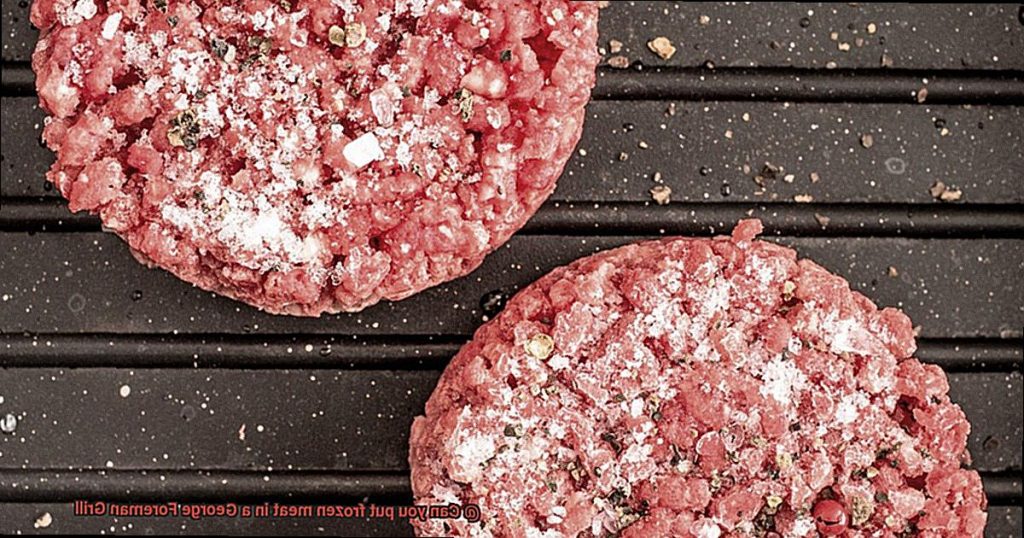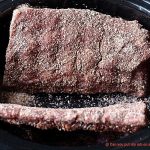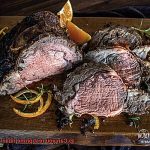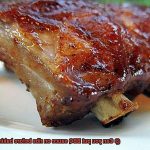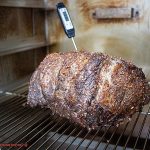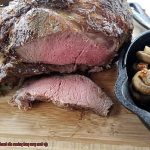Cooking meat can be tough, especially when you’re pressed for time. That’s why George Foreman Grills are a popular choice for many home cooks who want to whip up a quick meal. But what about frozen meat? Can you put it in your trusty grill without any issues? It’s a question that has stumped many people, and the answer isn’t as simple as a yes or no.
Sure, thawing frozen meat takes time, and sometimes you need to cook something up quickly without any prep work. But taking shortcuts with freezing meat can have serious consequences. In this blog post, we’ll dive into the pros and cons of cooking frozen meat on a George Foreman Grill. We’ll talk about safety concerns and potential health risks, but we’ll also explore the benefits of using frozen meat.
By the end of this article, you’ll have all the information you need to decide whether or not it’s safe to cook frozen meat on your George Foreman Grill. And if it is safe, we’ll show you how to do it properly so that your meal turns out perfectly every time. So let’s get started.
Contents
What is a George Foreman Grill?
The George Foreman Grill is a kitchen appliance that is a must-have for anyone looking for a quick and healthy way to cook their meals. This electric grill is named after the former boxing heavyweight champion, George Foreman, who endorsed it and made it a household name. The grill is designed to cook food quickly, efficiently, and healthily by draining excess fat from the food.
This versatile grill comes in various sizes, shapes, and models, all with a non-stick cooking surface that heats up quickly and evenly. Its slanted design allows excess fat to drain into a drip tray placed below the grill, making for healthier meals. Plus, its lid helps trap heat inside, ensuring even cooking on both sides of your food.
The George Foreman Grill is perfect for cooking a variety of foods including vegetables, fish, chicken, burgers, and steaks. It’s so easy to use and clean that it has become a popular choice among busy individuals who want to prepare quick and healthy meals. Additionally, the grill is also ideal for preparing paninis or grilling sandwiches as well.
One of the unique features of the George Foreman Grill is its ability to cook frozen food. While it’s generally not recommended for optimal results, some people have had success grilling frozen meat on their George Foreman Grill by adjusting the cooking time and temperature. However, it’s always best to thaw your meat before grilling for even cooking and optimal flavor.
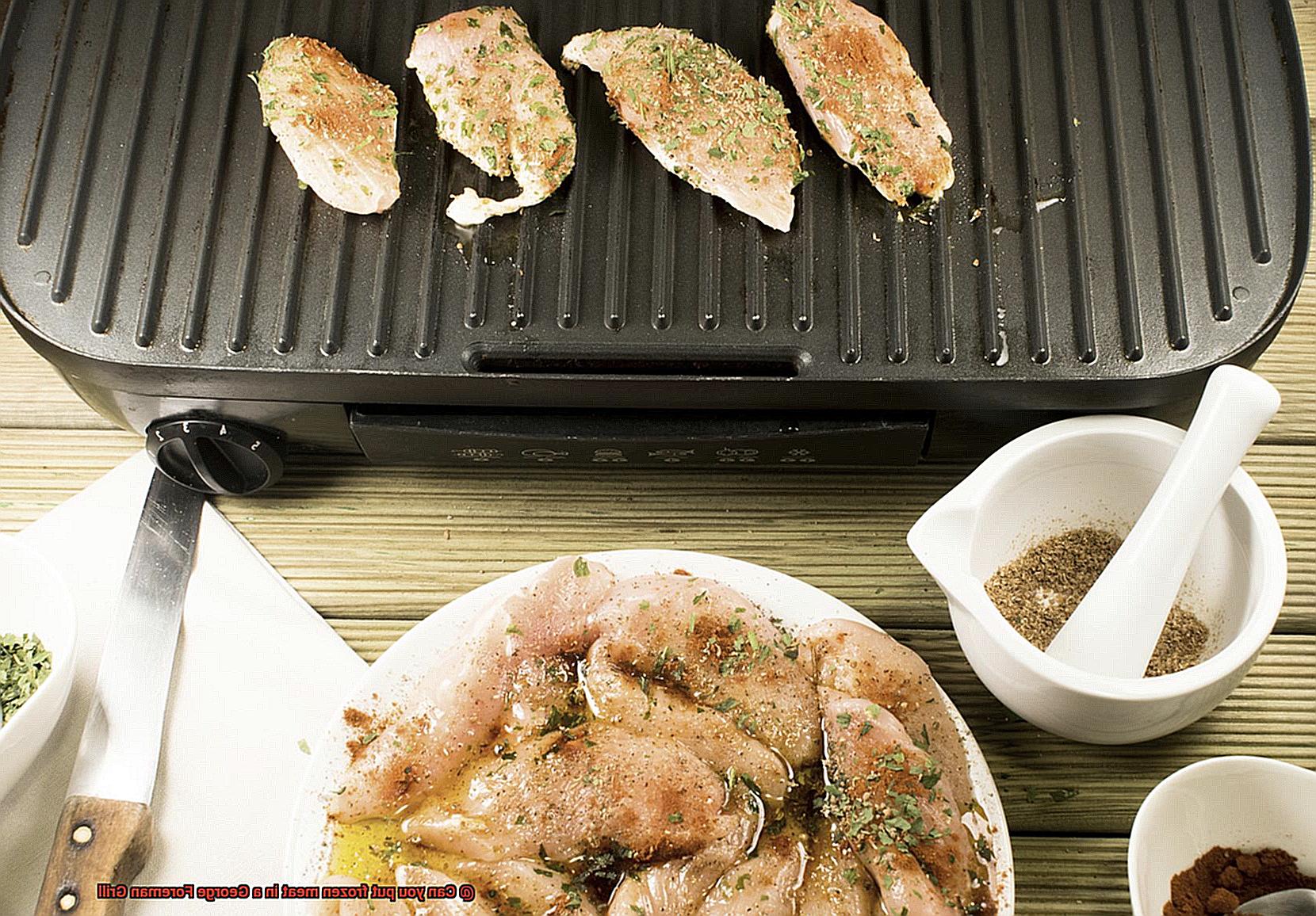
Pros and Cons of Grilling Frozen Meat on a George Foreman Grill
As an expert in this matter, let me share with you the pros and cons of grilling frozen meat on a George Foreman grill.
Let’s start with the positives. One major advantage of grilling frozen meat on a George Foreman grill is that it saves time. The innovative design of the grill allows food to be cooked from both sides simultaneously, which means that it can cook frozen meat faster than traditional grilling methods. Additionally, cooking frozen meat on a George Foreman grill can help retain more moisture in the meat, resulting in juicier and more tender results.
However, there are also some downsides to consider before you throw that frozen steak on the grill. One of the main concerns is that grilling frozen meat on a George Foreman grill can lead to uneven cooking. Because the outside of the meat will cook faster than the inside, there is a risk of overcooking or burning the outer layer while the inside remains undercooked, which can result in dry and tough meat.
Another issue to keep in mind is that cooking frozen meat on a George Foreman grill can cause excess smoke and steam. When the ice crystals on the surface of the meat melt, they turn into steam during cooking, which can cause smoke and steam to escape from the grill. This can lead to an unpleasant burning smell in your kitchen or even set off your smoke detectors.
To avoid these issues, here are some tips for grilling frozen meat on a George Foreman grill:
- Use thinner cuts of meat to ensure even cooking.
- Preheat your grill for at least five minutes before placing your frozen meat on it.
- Monitor your meat closely to avoid overcooking or burning.
- Use a meat thermometer to ensure the internal temperature of the meat reaches a safe level.
Thawing Meat Before Grilling for Best Results
Grilling is a time-honored tradition that requires attention to detail and patience. Yet often, the most overlooked step in grilling is thawing your meat beforehand. While it may seem like a hassle, thawing your meat is critical for achieving the best results. In this post, we will explore why thawing meat before grilling is so important and how to do it correctly.
Firstly, frozen meat can be challenging to cook evenly. When meat freezes, ice crystals form within it, causing moisture loss and uneven cooking. By thawing your meat before grilling, you allow it to reach room temperature, which promotes even cooking. As a result, your food will cook uniformly, resulting in better texture and flavor.
There are several methods for thawing meat, each with its own advantages and disadvantages. The safest method is to thaw meat in the refrigerator. This method prevents bacteria growth and maintains the quality of the meat. To do this, place the frozen meat on a plate or bowl on the bottom shelf of the refrigerator and let it thaw for several hours or overnight.
If you’re short on time, you can also use cold water to thaw your meat. Simply place the frozen meat in a leak-proof plastic bag and submerge it in cold water. Change the water every 30 minutes until the meat is fully thawed. This method is faster than thawing in the refrigerator, but you need to be more attentive to prevent bacteria growth.
It’s important to note that grilling frozen meat on a George Foreman Grill is not recommended. The grill’s surface is designed to cook food quickly and evenly, but frozen meat will not cook properly and may result in uneven cooking. Additionally, grilling frozen meat can cause flare-ups and potentially damage the grill’s non-stick surface.
Adjusting the Cooking Time and Temperature for Grilling Frozen Meat
With a few simple adjustments to the cooking time and temperature, you can still enjoy a delicious grilled meal with frozen meat on your George Foreman Grill.
The first step is crucial: preheat your grill for at least 5-10 minutes before placing the frozen meat on it. This ensures that the grill plates are hot enough to cook the meat thoroughly. Once the grill is heated, it’s time to adjust the temperature based on the thickness of your meat.
For thicker cuts of frozen meat, it’s best to lower the temperature slightly and increase the cooking time. This allows the meat to cook evenly without burning on the outside and being undercooked in the middle. However, increasing cooking time alone may not be sufficient; adjusting the temperature is equally important.
Keep an eye on your meat while it cooks and check for any signs of burning or charring on the outside. If you notice any, adjust the temperature accordingly. If your meat is cooking too quickly on the outside but still frozen in the middle, lower the temperature and increase the cooking time. Conversely, if there is no browning or charring on the outside of your meat after a few minutes, increase the temperature slightly to ensure even cooking.
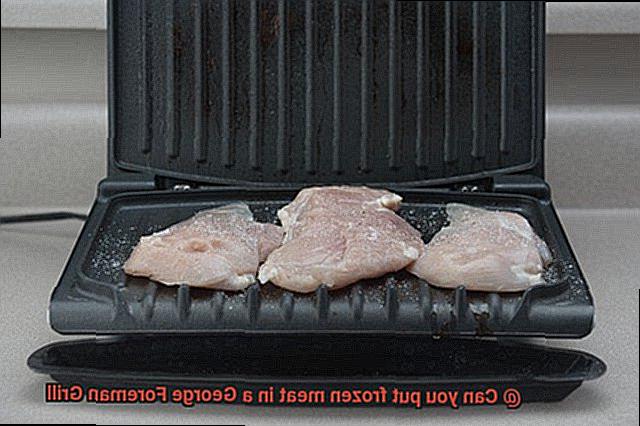
Different Types of Meat Suitable for Grilling Frozen
When it comes to grilling frozen meat on a George Foreman Grill, it’s important to know which types of meat work best. Some meats require thawing before grilling, while others can be cooked straight from the freezer. Here are five different types of meat that are suitable for grilling in a frozen state on a George Foreman Grill.
Beef is a great option for grilling frozen. Lean cuts like flank steak or sirloin are perfect for this method of cooking. However, thicker cuts like a ribeye or filet mignon may need to be thawed first to ensure even cooking. To cook beef from frozen, use a meat thermometer to check that the internal temperature has reached the desired level of doneness. For medium-rare, aim for 145°F; for medium, 160°F; and for well-done, 170°F.
Chicken is another meat that cooks well from frozen on a George Foreman Grill. Boneless, skinless chicken breasts or thighs are ideal for grilling frozen. But it’s important to ensure that the chicken is fully cooked before serving. To do this, use a meat thermometer to check that the internal temperature has reached 165°F.
Pork chops and tenderloin are both great choices for grilling frozen. However, thicker cuts may need to be thawed first to ensure even cooking. Like beef and chicken, it’s important to check the internal temperature of pork with a meat thermometer before serving. The recommended temperature range is the same as for beef.
Certain types of fish, such as salmon or tilapia, can be grilled straight from the freezer. But it’s crucial to make sure the fish is fully cooked before serving by checking the internal temperature with a meat thermometer. Aim for 145°F.
Finally, don’t forget about grilled vegetables. Peppers, onions, and zucchini can also be cooked straight from the freezer. Simply sprinkle with seasoning and grill until tender. They make a great side dish to any grilled meat.
Preheating the Grill Before Placing Frozen Meat on It
Grilling is an art form that requires precision and patience, especially when cooking frozen meat. However, fear not. With the right tools and techniques, you can achieve juicy, tender meat that is cooked to perfection. One of the essential steps to achieving this is preheating your George Foreman grill. Here’s why:
Firstly, preheating your grill guarantees that your frozen meat cooks evenly and thoroughly. When you place frozen meat on a cold grill, the temperature drops rapidly, leading to uneven cooking. This leaves you with undercooked or overcooked sections, which can ruin the taste and texture of your dish. Therefore, preheating ensures that the grill is at the desired temperature before placing the meat on it.
Secondly, when grilling frozen meat, you need more heat to cook it. Preheating your grill helps speed up the cooking process and reduces the risk of bacteria growth on your food. By doing this, you can guarantee that your meat reaches the desired level of doneness without compromising its quality.
Thirdly, adjusting cooking times is crucial when grilling frozen meat. Frozen meat takes longer to cook than thawed or fresh meat. Therefore, it is best to consult a cooking chart or recipe for guidance on cooking times specific to the type of meat you are grilling. By doing this, you can prevent undercooked or overcooked meat that lacks flavor and texture.
Lastly, using a meat thermometer is essential for food safety and ensuring that your meat has reached a safe internal temperature. This step is critical when grilling frozen meat as it requires more heat to cook evenly.
Tips for Safe and Optimal Use of Your George Foreman Grill
Not only will it ensure that you avoid accidents or injuries, but it also guarantees that you get the most out of your grill. Here are five sub-sections that explain in detail why following these tips is crucial:
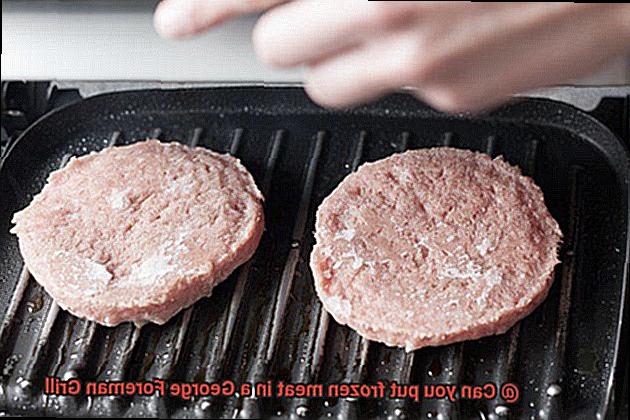
Preheating is Key
Preheating your grill for at least 5-10 minutes before cooking is essential to ensure even cooking and prevent sticking. Without preheating, your food may not cook evenly, leading to dry and overcooked meat. Moreover, placing food on a cold surface can cause it to stick, making it hard to remove and leaving behind residue that could ruin future meals.
Temperature Matters
Different meats require different cooking temperatures, so using the right temperature setting for each type of meat is crucial. Setting the grill too high or too low can affect the taste and texture of your food, leading to a disappointing meal. Always refer to the user manual for temperature guidelines and make sure you’re grilling at the recommended temperature.
Non-Stick Spray is Your Friend
Although George Foreman Grills are designed to be non-stick, using a non-stick spray can help prevent sticking and make clean-up easier. It’s always better to be safe than sorry, especially if you’re grilling delicate or expensive cuts of meat.
Don’t Overload Your Grill
It can be tempting to pile on as much meat as possible, but overloading the grill can lead to uneven cooking and longer cooking times. Make sure there’s enough space between each piece of meat for proper heat circulation. If necessary, cook in batches or choose smaller portions of meat that will cook more quickly.
Rest Your Meat
Allowing your meat to rest for a few minutes after cooking will help lock in the juices and ensure a moist and flavorful result. Cutting into your meat too soon will cause the juices to escape, leaving you with a dry and tough piece of meat.
7eGbfMFieN8″ >
Conclusion
To sum it up, the George Foreman Grill is a versatile and efficient kitchen gadget that can cook various foods. Although it’s possible to grill frozen meat on this appliance, it’s not recommended for the best results. Thawing your meat before grilling is crucial to ensure even cooking, better texture, and flavor.
Nevertheless, if you’re pressed for time and need to cook frozen meat, there are tips you can follow to guarantee safe and optimal use of your grill. Preheating your appliance, adjusting the cooking time and temperature based on the thickness of your meat, using thinner cuts of meat, monitoring your food closely to avoid overcooking or burning, and using a meat thermometer to check the internal temperature are all vital steps.
It’s important always to refer to a cooking chart or recipe for guidance on specific cooking times according to the type of meat you’re grilling. Furthermore, following these tips for safe and optimal use of your George Foreman Grill will ensure that you maximize its potential while avoiding accidents or injuries.

